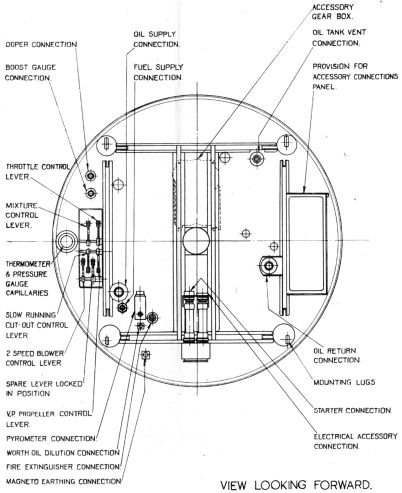
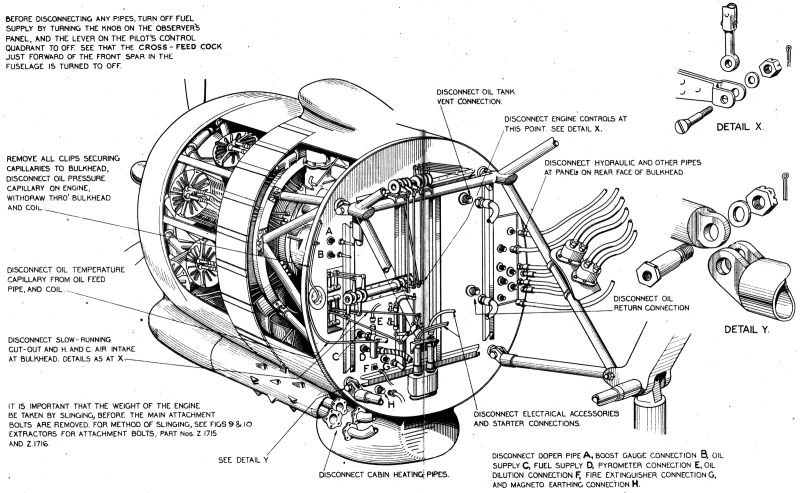
WWII Bomber Operational Considerations
From a British Perspective
Compiled by Kimble D. McCutcheon
Published 12 May 2024
| Stewart S Treselian, the storied British engine designer, spent three days at the National Advisory Committee for Aeronautics (NACA) Aircraft Engine Research Laboratory in Cleveland, Ohio during August 1943 acting in his capacity as the USAAF/RAF engine coordinator. While there, he passed along several recommendations based on his observation of U.S. military aircraft operating in the United Kingdom. Among those with whom Tresilian spent time was Col Edwin R. Page, who in addition to his role as the Materiel Command Liaison Officer was also the Power Plant Laboratory Chief. Col Page's account of their interaction provides a rare look at U.S. Army Air Forces operational policies from the perspective of someone outside the "brotherhood." This article comes from the U.S. National Archives at College Park, Maryland, Record Group 342, RD Numbers 3878 and 4843. |
Tresilian's racing background had schooled him in the importance of things being easy to operate and easy to maintain. Tresilian opined that entirely too much time was being spent on maintenance at the front, which seriously reduced aircraft availability. His more important observations are discussed are presented below.
1. Engine and Accessory Quick-Change Capability
Tresilian noted that apparently little consideration had been given to U.S. materiel maintainability. Presumably simple operations, such as engine changes, spark plug replacement and valve adjustment took too long. Col Page stated that the Materiel Command Engineering Division (hereinafter MatCmd) was aware of the maintenance difficulties, in agreement that changes were necessary, and was preparing specifications addressing these issues. Improved, more maintainable equipment would be brought out in production when practicable.
2. Better Aircraft Accessibility to Facilitate Maintenance
Tresilian suggested that accessibility should be improved even if weight and drag were impacted, noting that American designers often sacrificed accessibility for performance. Col Page pointed out that significant redesign would be necessary for existing aircraft, but that accessibility should be a goal for future designs.
3. Improved Engine Controls
Tresilian, who had been exposed to British aircraft and engine design practice, was in a good position to compare British aircraft cockpit ergonomics and pilot workload to U.S. counterparts. He was keenly interested in measures to prevent improper and destructive engine/turbocharger operation. He noted that in Consolidated B-24s it was convenient for the pilot to operate the throttles and the copilot to operate the turbochargers. This was not true of Boeing B-17 due to control layout. Hence, the pilot would typically set the turbocharger controls to maximum boost and then close the throttles to achieve the desired manifold pressure. This practice resulted in high induction temperatures, detonation, and turbocharger turbine bucket stretch. Tresilian maintained that 50% of the engines replaced had been damaged by detonation, since manifold pressures of 60 – 70 inHgA were common under combat conditions (B-17 engine manifold pressure was redlined at 46.0 inHgA for 5 minutes, 41.5 inHgA continuous).
[Note: The hydromechanical turbocharger controls used at this time resulted in a heavy engine management workload. Any change in density altitude or air temperature resulted in the need to adjust the turbocharger controls. Later electronic controls alleviated much of this busy work, but one can understand how overworked pilots would take shortcuts. The whole "let the pilot do it" control philosophy of U.S. designers was in marked contrast to British and German designers, both of whom inserted automatic controls where they were practical, and in the case of the Germans, a complete single-lever engine control.
Tresilian said that present carburetors satisfactorily controlled fuel/air mixtures within a given manifold pressure range, but that with higher pressures the fuel/air mixture would become too lean. Use of an automatic carburetor/turbocharger boost control might help, as might linking the throttle control to a spark advance mechanism.
Col Page said that changes to engine operational policies would need to be investigated and coordinated with combat organization commanders.
4. Adoption of "Power Egg" Engine Installations
Tresilian suggested that Air Forces representatives in England observe some of the several modular engine installations then in use. These featured a cowled engine with accessories, standardized mounting, standardized plumbing connections and standardized electrical connectors, all of which facilitated swapping, thereby reducing engine change time. The British had aircraft with interchangeable power eggs that allowed the use either air-cooled or liquid-cooled engines on the same aircraft type; everything forward of the firewall was part of the power egg.
5. Colder Spark Plugs
Tresilian suggested that using spark plugs with colder heat ranges might mitigate some of the engine damage described earlier. He also noted that British spark plugs had a wider heat range than did those made in the U.S.A. Col Page recommended acquiring some of the British spark plugs for testing. At this point in time, British plugs were used in B-17s when they were available.
Summary
Col Page made an interesting observation covering several of Tresilian's points. While the suggested modifications might be advantageous under conditions encountered in England, the same would not be true of aircraft operating in the Pacific Theater. He also noted that regardless of the control schemes applied to engines, pilots would still find ways to abuse the equipment.
Comparing Engine Controls in Three Bombers
Tresilian's plea for improved engine controls presents an opportunity to compare the design philosophy of three similar airplanes that were all simultaneously fighting in the European Theater during his NACA visit. At that time, no standards for instrument and control placement and labeling had evolved, which meant control and instrument placement were designers’ choices.
Boeing B-17
The Boeing B-17, which first flew on 28 Jul 1935, depended on the pilots to control everything. The engine controls, except for the hydraulic cowl flaps, were all manually-operated cable controls. Only the landing gear and wing flaps were electrically operated, and even the flaps required a pilot to actuate a momentary-contact switch while simultaneously watching the flap position indicator until the desired amount of flap extension was achieved. The B-17 was truly a two-pilot airplane, with engine controls scattered all over the cockpit. The throttle control was a quaint oversized monstrosity that dominated the control pedestal; when at a take-off, climb or cruise setting, it all but revented the copilot from accessing the turbocharger controls. The flight instruments were on the left and the engine instruments on the right, making it hard for the pilot to read the engine instruments and the copilot to read the flight instruments. Hence, the pilot flew the airplane and the copilot, with the help of the flight engineer/top turret gunner, managed the engines. But no one other than the pilot could easily reach the turbocharger controls! It is no wonder the crews took shortcuts that damaged engines.
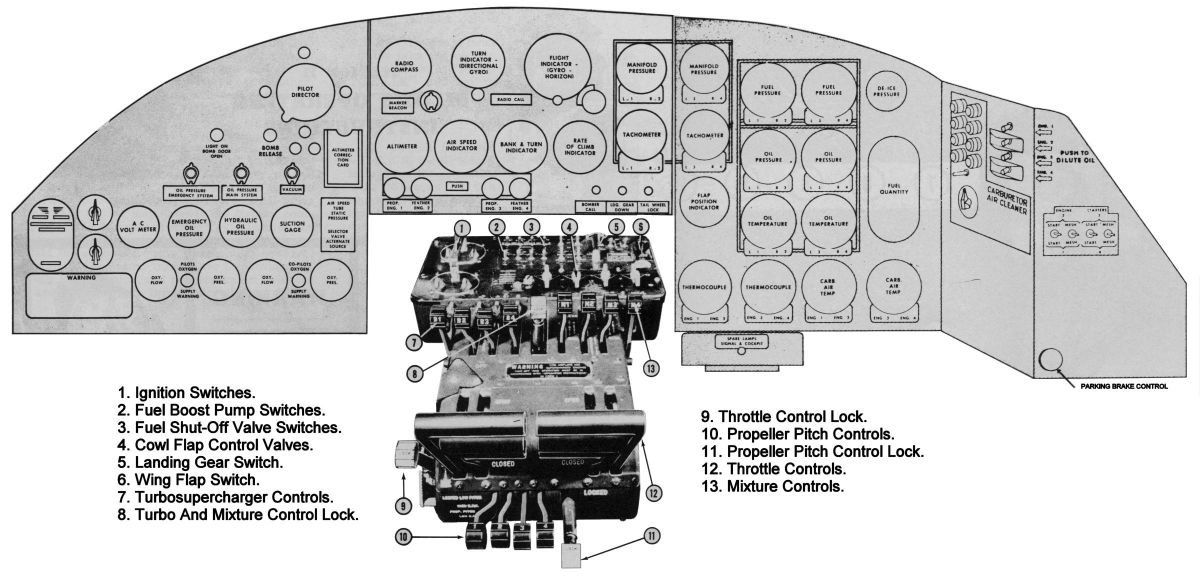 |
| Boeing B-17 Controls and Instruments Overview |
Consolidated B-24
The Consolidated B-24, which first flew on 29 Dec 1939, had nearly four years' advantage of industry experience with cockpit layout and new electric control technologies. The smaller electric controls allowed a more centralized layout. While still a two-pilot airplane requiring a division of labor, the B-24, once the engines were started, could be operated from either pilot seat.
Avro Lancaster
The Avro Lancaster, which first flew on 9 Jan 1941, illustrates a more thoughtful and refined engine control philosophy. In fairness to the B-17 and B-24, the Lancaster relied on a two-speed mechanical supercharger instead of turbosuperchargers, which for all practical purposes, eliminated two sets of cockpit controls; a single switch controlled all four superchargers simultaneously. The mixture controls have be eliminated completely in favor of a fully automatic altitude-compensated mixture control scheme. Finally, the Lancaster was a true single-pilot bomber. It was narrow enough for the pilot, with some turning and stretching, to reach the Air Observers' panel on the right cockpit side, which was normally under command of the second pilot/air observer.
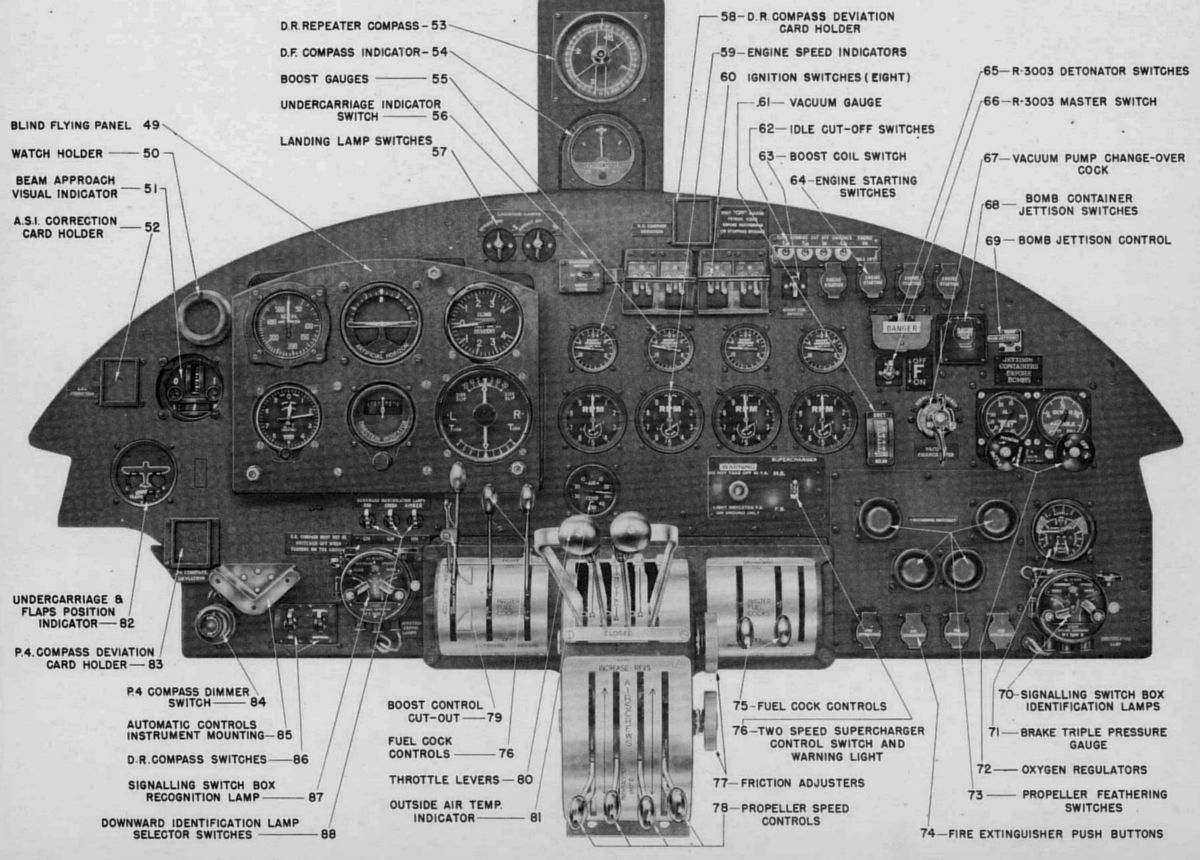 |
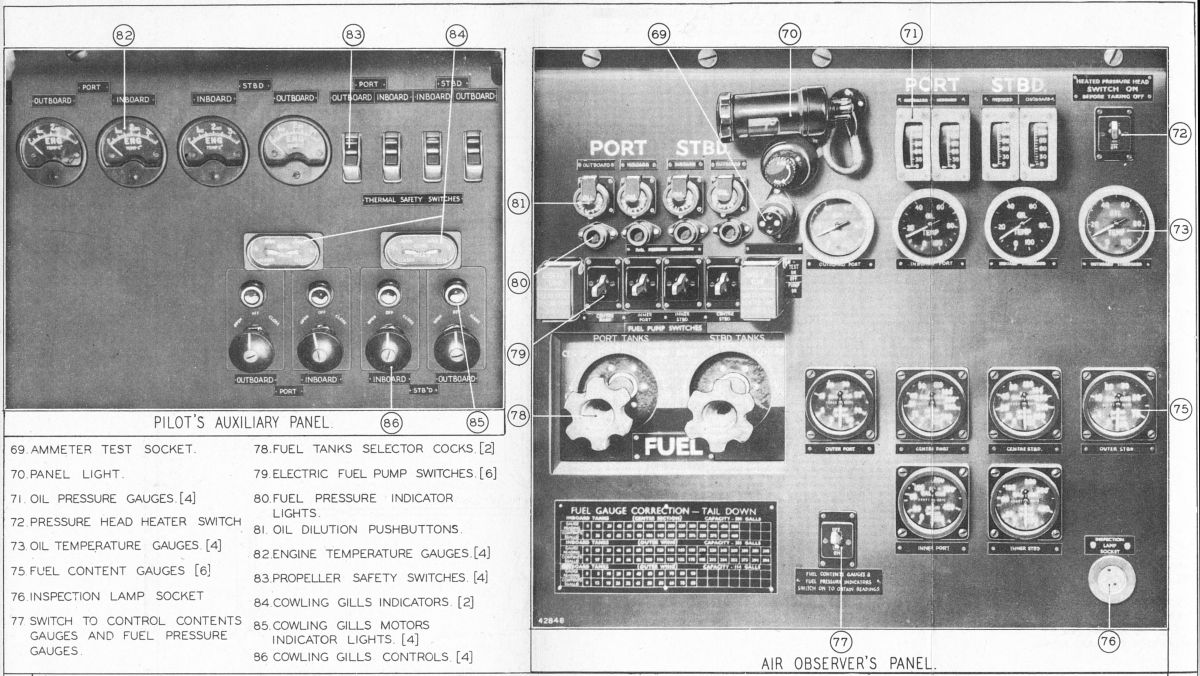 |